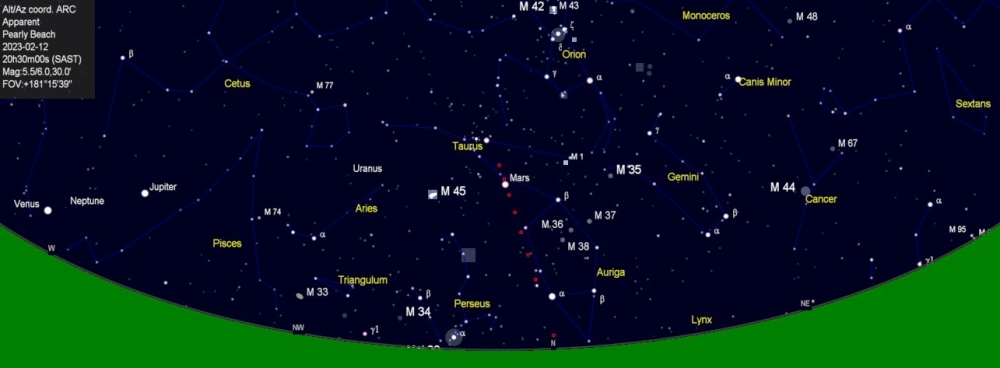Look north for comet ‘visit’ early in February
On 2 February, comet C/2022 E3 (ZTF) reaches its closest point to Earth since the Ice Age about 50 000 years ago. It may even be bright enough to see with the naked eye.It should also be visible locally from 4 February when it will initially appear near the star Alpha Aurigae (Capella) and may shine near Mars on the 10th and 11th, before passing by the star Alpha Tauri (Aldebaran) on the 15th.
NASA says the comet already reached its closest point to the sun on 12 January and will reach its closest point to the earth on 2 February – around 42 million kilometres from Earth.
Although comets are unpredictable, they usually become increasingly bright and may eventually reach a magnitude greater than 6, according to the COBS Comet Observational Database. In this case, you will be able to see it with the naked eye from a dark location.
According to the database, the comet will be at its brightest on 1 February, after which it may dim again. For better clarity, you are advised to use binoculars or a telescope.
The Southern Cape Astronomy Club recently shared maps of the night sky with members “that can be used by spectators all over South Africa”, based on which the comet will be seen higher and higher in the night sky from 5 to 12 February.
However, the further north from the Cape, the better your chance of seeing the comet first - even before 4 February, the club said.
On 5 and 6 February, the comet will make its appearance at 20:30 just above the northern horizon and will be best seen until 21:20. After that, the comet will move higher every day, until it can be seen close to Mars on 12 February.
Australia's Sir Thomas Brisbane Planetarium says the comet will probably appear as a faint spot of light - perhaps with a faint tail in the upper right.
The planetarium said that our solar system probably has "trillions of comets", but that only a fairly small amount of them travel to the centre of the solar system. Even fewer are remarkable and can be observed with the naked eye.
"The comet has so far been best observed from the Northern Hemisphere," it said.
The comet's name indicates in which year and month it was discovered, as well as how many comets there are to be discovered in the specific period. The last part of the comet's name refers to the person or institution that discovered it. In this case, it was discovered by the Zwicky Transient Facility (ZTF).
The name C/2022 E3 (ZTF) therefore means that the comet (C/) is the third one (3) to be discovered in the first half of March 2022 (period 2022 E) and that it was detected by the Zwicky Transient Facility (ZTF).
The comet is parabolic, meaning that it has been disrupted from an orbit in the Oort cloud and is moving through the centre of our solar system on a parabolic orbit, which is unlikely to make it return.
This parabolic trajectory is tilted at an angle of 109 degrees when compared to the solar system.
Sources: NASA, Southern Cape Astronomy Club, Sir Thomas Brisbane Planetarium, www.sky.org.




